What Was the Best Multiplayer FPS Game of 2016?
2016 IN REVIEW: Every year seems to feature a bevy of quality FPS titles, but 2016 saw some exceptional releases.
This article first appeared on USgamer, a partner publication of VG247. Some content, such as this article, has been migrated to VG247 for posterity after USgamer's closure - but it has not been edited or further vetted by the VG247 team.
A couple of years ago, I proclaimed that 2014 was a vintage year for first-person shooters. This time last year, I wrote that 2015 was a great year for the multiplayer shooter. And now, here I am again, about to repeat myself – because stap me vitals if 2016 hasn't also been a memorable one for the genre. Indeed, I believe it's been one of the best years yet for fans of competitive gunplay.
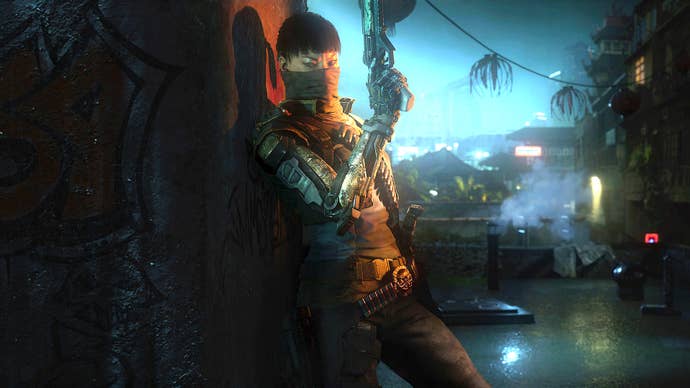
Back in January, I still had the brilliant Call of Duty: Black Ops III on heavy rotation. Sure, Treyarch's best-selling retail game of 2015 lacked any real surprises, but its free-flowing gameplay was beautifully honed. What I particularly liked about it was its meticulously finessed chained movement system, which gave players a very high degree of control over their avatar and enabled them to pull off spectacular maneuvers with intuitive ease. Combine that with the game's exceptionally tight gunplay mechanics and very nicely designed maps, and you have a title that I feel was the benchmark multiplayer shooter of 2015 – and still continues to be my favorite Call of Duty title in 2016.
In between bouts of Black Ops III, I also sank a chunk of time into another 2015 holdover, Rainbow Six: Siege. Although the asymmetrical tactical shooter had a somewhat inauspicious launch, the game's player base grew dramatically during 2016 thanks to some excellent support from Ubisoft, and by the summer had almost doubled its daily player launch numbers. That success doesn't particularly surprise me: Rainbow Six: Siege offers really tense and gripping gameplay that's very different to most high bodycount shooters. If you're into more thoughtful, methodical and tactical combat, there really isn't anything else like it, and now that my initial launch qualms that its content felt a little light have been addressed by a series of quality updates, it's become a really good game.
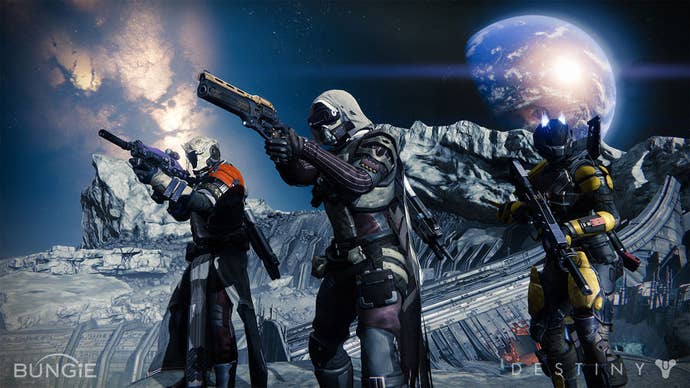
Another older shooter that I dipped into multiple times this year was Destiny, especially when the Rise of Iron expansion was launched in September. The rather modest add-on ushered in two new multiplayer maps, a new Kill Confirmed-style Supremacy mode, and, more importantly, made sweeping changes to the Crucible's weapon balancing that helped create one of the most equitable competitive PvP environments the game has yet seen. This is pretty much Destiny's final form for multiplayer, and it's a really robust offering that features plenty of modes, maps, and events to keep players occupied while they await whatever Destiny 2 might bring.
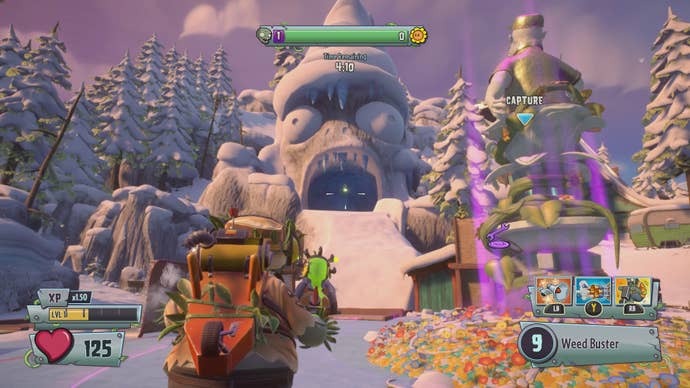
Pop Cap's colorful, pun-packed third-person multiplayer shooter, Plants vs. Zombies: Garden Warfare, got its second outing in February, although the sequel felt more like an expansion of the original game than completely new release. Garden Warfare 2 basically built on the original's foundation, incorporating everything from the first release, and adding three new characters per team, as well as a couple of new multiplayer modes. It also introduced a fair chunk of single-player content, and a central hub called the Backyard Battleground that had numerous activities to engage in, but I didn't find either particularly compelling – although it does seem like many Garden Warfare fans did.
For me, the game's core appeal is its multiplayer, and despite a strong feeling of déjà vu while playing it, I still really enjoyed Garden Warfare 2's singular brand of zany, character-driven action. I had some initial concerns about some of the newer characters feeling overpowered, but Pop Cap have released a couple of balancing updates during 2016 aimed at leveling the playfield, and currently the game feels in pretty good shape. It's just plain fun to play, and remains one of my go-to shooters when I'm in the mood for competitive gameplay that's a little more lighthearted.
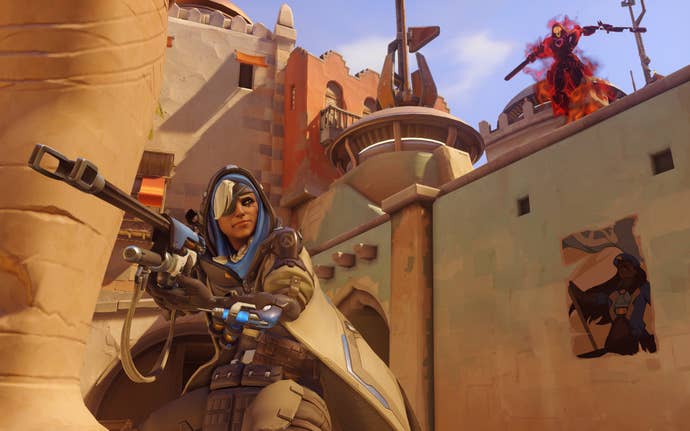
In May, we had two superficially similar character-driven shooters going head-to-head: Battleborn and Overwatch. Unfortunately, 2K Games' release wasn't as well received as Blizzard's outstanding title, and has struggled this year as it has attempted to find ways to broaden its appeal and bring in new players. Overwatch, on the other hand, has gone from strength to strength, garnering 20 million players by October, and becoming one of this year's breakout hits.
There are a variety of reasons why Overwatch is so successful, but one of its main attractors is its amazingly diverse and approachable roster of 23 unique characters that each fit into one of four basic roles: support, defense, offense, and tank. Every character has his or her own unique attributes, weapons and abilities, making the game feel a lot less cookie-cutter than most other class-based shooters, and giving it plenty of replay value as players experiment to find which heroes work best with their own playstyle and temperament.
Another appealing aspect of Overwatch is its objective-based gameplay, which puts heavy emphasis on team co-operation. It makes the game hugely fun to play as you figure out from minute to minute which is the best character to choose to support your team's current endeavors, or to counter the opponent's strategies. As a result, the gameplay feels very dynamic, and gives players the chance to be very creative as they work together to complete their goals.
Finally, there's the fact that Overwatch is simply a brilliant alternative to the more military-based shooters that have dominated the FPS scene over the past decade. Its bright and colorful graphics, attractive characters, and super-slick action make for a highly compelling experience that doesn't get old fast. Has the game opened the door for other alternative class-based shooters? That, we'll have to wait and see, but what's for sure is that Overwatch has been a breath of fresh air for the FPS genre, and is a game that seems to have a bright and rosy future ahead of it, judging by the support that Blizzard is putting behind it in terms of new characters, maps, and seasonal updates.
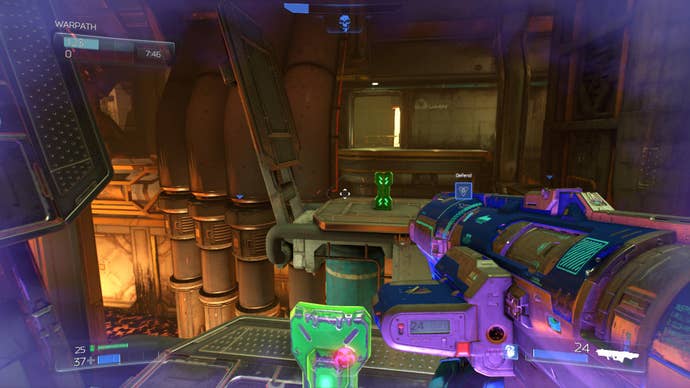
Like Overwatch, Doom was another very pleasant surprise this year: A deliciously oldschool game whose cadence and style hearkened back to FPS releases of yore. While it does have the contemporary trimmings you would expect in terms of presentation and general setup – and the game also boasts a terrific level creation tool in the form of SnapMap – Doom's multiplayer is basically very simple and straightforward. Pick two from the list of classic and modern weapons, and then enter one of the three traditional modes – Team Deathmatch, Domination, and Kill Confirmed – or tackle either of the new ones in the form of Warpath and Freeze Tag.
Doom isn't exactly a finesse multiplayer shooter. Aiming and general gunplay are not as crisp as the Call of Duty series, for example, and most player versus player encounters that occur within the game's often twisting and labyrinthine levels are settled within fractions of a second: Whoever's quickest on the trigger gets the kill. While this is true of most shooters, Doom's gameplay is particularly fast and brutal, making it a title best suited for those who have lightning quick reflexes.
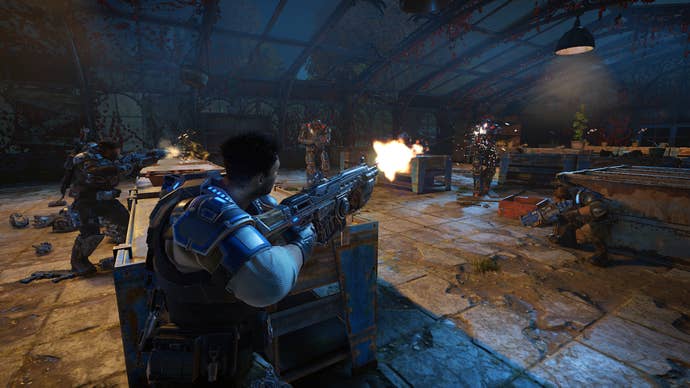
Gears of War 4's gory third-person multiplayer action also feels like a throwback, because it sticks to the same formula that made previous entries in the series such fun to play. This time out, the game packs six different multiplayer modes, all of which work really well within its fairly tight, but nicely designed five versus five arenas.
What I like about Gears of War 4's PvP is that it has a very different identity and feel to most of the other games on this list. It's a cover-based shooter, which means combat is generally a little slower, and a lot more up-close and personal than the likes of Destiny, Battlefront, and Call of Duty. A degree of patience and strategy are required to get the best out of it: If you're careful and use cover effectively, the action becomes a tense game of cat-and-mouse. Most of the time you know where the enemy is, and you're essentially trying to outmaneuver them, either by sneaking around so that you can get a clear shot on target, or putting yourself into a position where you can use one of the new cover mechanic kills, such as the yank and shank or the vault kick, to eliminate them.
That continual jockeying for position results in entertaining PvP combat that can lead to some really intense firefights where it's all about the team working together to outflank the opponents. This is especially true when you're playing more objective-oriented modes like Guardian, where you're attempting to take out the enemy team's leader before eliminating the rest of your opponents. It's very satisfying, and a really nice change of pace from the usual run-and-gun multiplayer shooters.
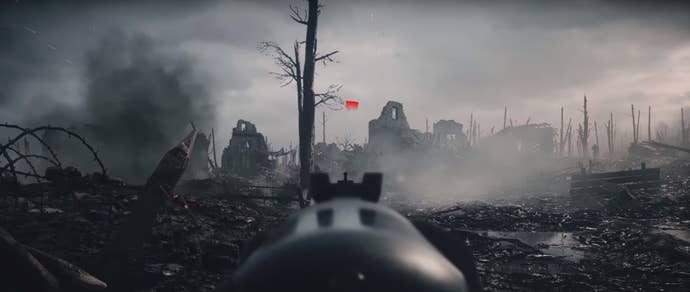
Most recently, we've seen the release of a trio of exceptionally strong multiplayer shooters: Battlefield 1, Titanfall 2, and Call of Duty: Infinite Warfare. Actually, an argument could be made that we've had a quartet of shooters appearing within a few weeks of each other, because I haven’t counted the remastered copy of Call of Duty: Modern Warfare that comes with the premium-priced editions of Call of Duty: Infinite Warfare.
I got a big kick out of revisiting Raven Software's remaster of Infinity Ward's classic, and extolled its single-player virtues at length in the piece I just linked to. However, what was a real surprise to me was just how much fun I had going back to its multiplayer. After playing more recent iterations of the series, I was worried that returning to the nine-year-old, boots-on-the-ground format of Modern Warfare would feel stifling, limited, and clunky – but nothing could be further from the truth. Fact of the matter is that the game feels really fresh and entertaining; its limitations are more like challenges that make you rethink the latter-day strategies you now take for granted. There's no sliding around corners, ducking behind objects, or boosting out of the line of fire: Instead, you need to be more cautious when moving around, and constantly think about your positioning and your potential exposure to the enemy, lest you be picked off with ease.
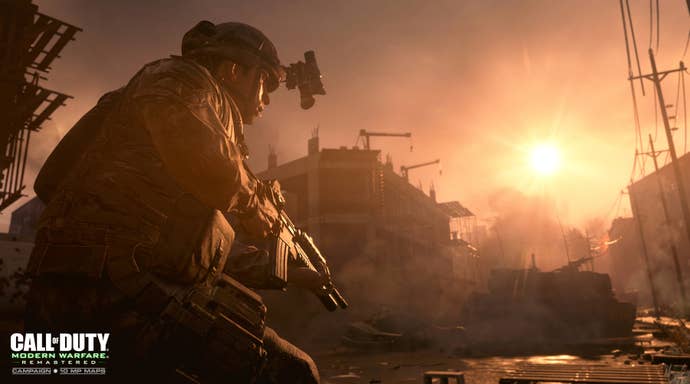
While Modern Warfare Remastered had me re-evaluating my current multiplayer shooter strategies that I've taken for granted for the last few years, approaching Infinite Warfare's PvP felt as comfortable as donning a favorite pair of old slippers. Maybe that's a little unfair, but to be blunt, Infinity Ward's latest didn't really offer anything particularly new, let alone innovative. On a fundamental level, it plays like last year's benchmark game: Its chained movement system is basically the same, and its cache of weapons look exotic, but all function in a very familiar fashion.
Infinite Warfare's headline new addition is its Combat Rigs, which work in a similar way to the Specialists from last year's Call of Duty. Each of the six futuristic suits of armor offers a choice of three limited-use payloads (usually an item or weapon), and a trio of permanent-effect traits that can be selected to augment a specific kind of playstyle. It's a nice idea that allows players to fettle and tweak the way they play, but the results are pretty subtle, and don't really change up the gameplay in an overt way.
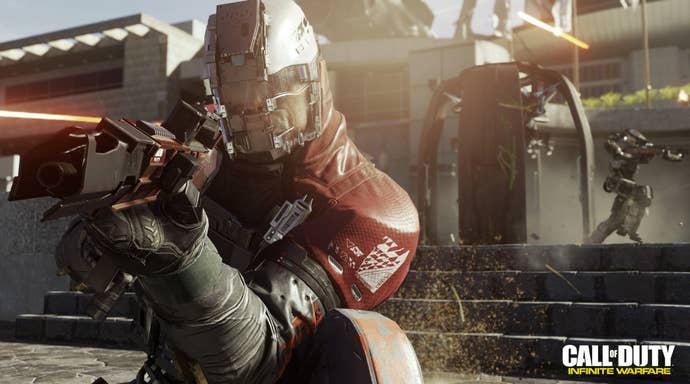
However, despite it being predictable and formulaic, Infinite Warfare's multiplayer is also incredibly slick and exceptionally well polished. As a longtime fan of the series who hasn't yet tired of its routine, I've been sinking a fair amount of time into it as of late, and while I haven’t had quite as much fun with it as I did with Black Ops III (nor do I see it having the same staying power), I still find it a compelling and absorbing shooter – for the time being, at least.
It seemed that historical shooters were all out of fashion until DICE announced that the latest Battlefield game was going to be based on World War I. After last year's rather disappointing cops and robbers-themed Battlefield: Hardline, this came as welcome news: The series was essentially going back to its roots with large-scale campaigns, historical weapons, and a wide variety of different vehicles to take to war.
The move turned out to be an inspired one: Battlefield 1 is an audio-visual tour-de-force – perhaps the most impressive-looking and sounding shooter currently available thanks to its breathtaking landscaping and awe-inspiring effects. Sometimes when you're in the midst of a battle, and there's artillery exploding all around you, vehicles are criss-crossing the terrain, and squads of soldiers are rushing towards you, it's hard not to stop and marvel at the sheer spectacle of it all. Not that you should, of course, since you'll very likely be gunned down in short order.
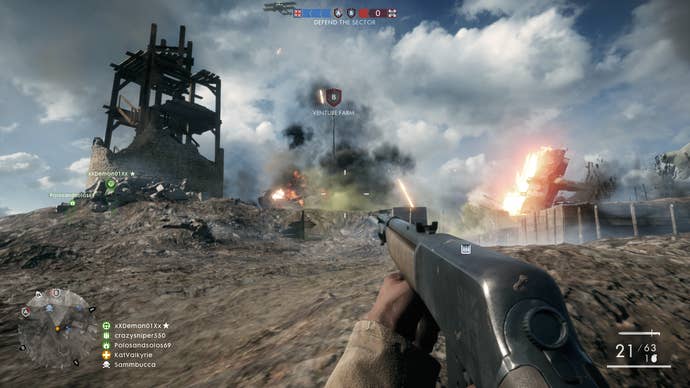
Featuring four basic classes – Assault, Support, Scout, and Medic – Battlefield 1's gameplay is a little slower than Call of Duty's, but it's no less intense. The massive 64-player Campaign and Operation modes can be incredibly hectic as your team attempts to attack and defend objectives, and even the smaller-scale skirmishes in the form of Domination and Team Deathmatch concentrate the action nicely to create tight and exciting firefights. It all adds up to a brilliant competitive game that's varied, interesting, and visceral; a return to form that's proof positive that taking a franchise back to basics can be a risk worth taking.
Finally, we come to Titanfall 2. Despite being critically lauded, the game has been dogged by reports that its sales have been disappointing so far. Perhaps that has something to do with the fact that its release date was sandwiched between Battlefield 1 and Call of Duty: Infinite Warfare, or maybe Titanfall is simply not the marquee title that EA thinks it is, but whatever the reason for its lack of success, I nevertheless believe that the game is one of the year's best multiplayer shooters.

For a start, its easy-to-master controls are the finest of any FPS out there. They have a deftness of touch that enables players to spectacularly parkour their way around the game's expansive, nicely designed maps with relative ease. Gunplay is similarly impressive: Titanfall 2's weapons don't have the depth of attachment customizability and variety of Infinite Warfare, but I love their heft and precision – they just feel great to use.
Then, of course, there are the Titans. This time out, there are six to choose from, each of which has its own unique loadout and playstyle. For me, they add a richness and depth of dimension to Titanfall 2's gameplay that's really exciting, unlike anything else currently offered by an FPS. Titan versus Titan combat can be riveting stuff, and in a few rare instances, clutch Titan play can even swing a game in your favor. However, they don't feel particularly overpowered. Everybody basically gets to call in at least one Titan during a match, making for an equitable environment where skilled play can garner a slight advantage, but not an unfair one.
In my review, I did criticize Titanfall 2 for feeling a tad light on content at launch – the game features seven modes and nine maps – but the good news is that Respawn have announced that the game will be supported by a series of free updates that will deliver additional modes and maps. The first was launched last week and adds the classic Titanfall map Angel City to the current roster.
Bottom line, I've loved playing Titanfall 2's multiplayer. It's really engaging and rewarding, and the cadence of its action feels absolutely spot-on. Is it the best shooter this year? No. It does run it a very close second, but I think for me Overwatch gets the top honors for 2016. Blizzard's new IP dared to be a little different and took a few risks with its character-based gameplay, but it succeeded. It's a fabulously entertaining shooter that has incredibly broad appeal – and I think it'll be just as successful in 2017 as it was this year.








